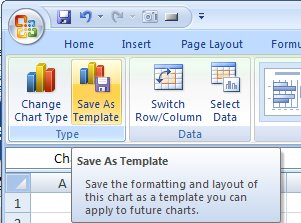

And if you clump the addresses and ZIP codes together, you have no way to count the number of people in a certain town or neighborhood. For example, you can start by typing information into cell A40 without worrying about filling any data in the cells that appear in the earlier rows.įigure 1-4. Top: If you enter both first and last names in a single column, you can sort the column only by first name. However, you don’t have to follow any set order. When you enter information, enter it one cell at a time. Every spreadsheet file can hold a virtually unlimited number of worksheets, as you’ll learn in Chapter 4. In the unlikely case that you want to go beyond those limits-say, if you’re tracking blades of grass on the White House lawn-you’ll need to create a new worksheet. Incidentally, an Excel cell can hold approximately 32,000 characters.Ī worksheet can span an eye-popping 16,000 columns and 1 million rows. Figure 1-3 shows this cell, which looks like a rectangular box. For example, C6 is the address of a cell in column C (the third column) and row 6 (the sixth row). Excel uniquely identifies each cell by column letter and row number. The smallest unit in your worksheet is the cell.

Excel names columns using letters (A, B, C…), and labels rows using numbers (1, 2, 3…). You won’t get any sample slides and a couple of other minor things, but for the most part it’s the same, and it seems to be more reliable than saving a default template.The grid divides your worksheet into rows and columns. You can right-click its thumbnail in the gallery and choose Set as Default Theme. Once the THMX file is in that folder, you’ll see it in the gallery on the Design tab. This is just one level lower than where you’d save the default template. That file goes in this folder (where PPT definitely will take you by default): C:\Users\ \AppData\Roaming\Microsoft\Templates\Document Themes. The other thing is, maybe you can opt for a default theme instead of a default template? Open the file you want to use as the default, choose File | Save As, and then in the save as type dropdown, choose Office Theme (*.thmx). Look for Blank.POTX in the folder listed.Īlso, your “Blank” file is POTX, right? Not PPTX? What’s listed on the Save tab under Default Personal Templates Location? By default it is something like C:\\Users\ \Documents\Custom Office Templates\, but you may have changed it. Here are some thoughts, though.įirst, head to File | Options in PowerPoint. Problem is, I don’t know exactly where the problem actually lies. I’ve had that same problem, so you’re definitely not alone. If you want to set a default theme, go to the Design tab, right-click the theme you want, and choose Set as Default Theme. (Well, there are other differences, but that’s the most important one in this situation.) Biggest difference between a theme and a template? A template has sample slides. If you’ve already set a default theme, then your default template won’t appear as described above. Note: PowerPoint also lets you set a default theme, but you can only have one or the other. Your default template will be the first file listed on the start screen, where it will be labeled Default Theme – but it’s actually a default template, complete with any sample content slides you included. Test by going to File | New or by re-starting PowerPoint. This fulfills the “right name” requirement. This fulfills the “right place” requirement.ĥ. So navigate to C:\Users\UserName\AppData\Roaming\Microsoft\Templates. PowerPoint no longer takes you to the correct folder when you choose POTX as the file type. At the bottom of the dialog box, choose PowerPoint Template (*.potx) in the Save as Type dropdown menu.Ĥ. Choose File | Save As | Computer | Browseģ. Open the presentation or template that you want to use for your default template.Ģ. Once hidden folders are showing, do the following to set your default template:ġ.

EXCEL 2013 DEFAULT TEMPLATE WINDOWS
To do so in Windows 8, open a folder (on the desktop – if you don’t have one, make one by right-clicking on the desktop and choosing New | Folder),Ĭlick the View tab at the top of the folder. On the View tab, click Show hidden files, folders and drives. To do so in Windows 7, open a folder and click Organize | Folder and Search Options. You still have the same two requirements as always: it must be in the right place, and it must have the right name. It’s not quite as simple in PowerPoint 2013, but it’s not difficult, either. (Here are instructions to save a default template in PowerPoint 2010 and prior.) This can be very helpful if you are required to use a corporate template, for example. In previous versions of PowerPoint, you could save a default template so that when you started PowerPoint or a new, blank presentation, you’d get the template of your choice rather than the default (blank white) Office template.


 0 kommentar(er)
0 kommentar(er)
